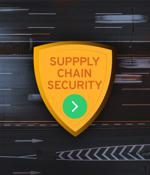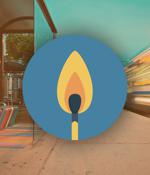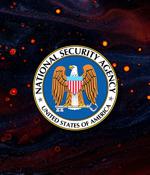Security News

A threat actor likely with associations to China has been attributed to a new supply chain attack that involves the use of a trojanized installer for the Comm100 Live Chat application to distribute a JavaScript backdoor. Cybersecurity firm CrowdStrike said the attack made use of a signed Comm100 desktop agent app for Windows that was downloadable from the company's website.

There's been a massive push for supply chain security in the last few years: integrity protection, vulnerability management, and transparency. This push has left organizations struggling to secure their pipelines and manage vulnerabilities, especially when running in the cloud.

Wolfi is a new community Linux undistribution that combines the best aspects of existing container base images with default security measures that will include software signatures powered by Sigstore, provenance, and software bills of material. Software supply chain security is unique - you've got a whole lot of different types of attacks that can target a lot of different points in the software lifecycle.

Despite all the security vendors' best efforts to whitewash their products around software supply chain security, it's still unclear exactly how anyone is supposed to build or maintain these SBOMs. Recent memos out to the heads of federal agencies merely underscore the "Importance of secure software development environments" without much useful elaboration on how to get there. A new stack is forming, and I believe we are about to see theoretical conversations about software supply chain security leapfrog into actual implementations and refinement of best practices.

Infosec outfit Sansec raised the alarm this week that FishPig's software was acting weird: when a deployment's control panel was visited by a logged-in Magento staff user, the code would automatically fetch and run from FishPig's back-end systems a Linux binary that turned out to be Rekoobe. Free versions of FishPig modules available on GitHub were likely clean.

FishPig, a UK-based company developing extensions for the popular Magento open-source e-commerce platform, has announced that its paid software offerings have been injected with malware after its distribution server was compromised. How the attackers compromised the FishPig extensions.

Hackers have injected malware in multiple extensions from FishPig, a vendor of Magento-WordPress integrations that count over 200,000 downloads. The intruders took control of FishPig's server infrastructure and added malicious code to the vendor's software to gain access to websites using the products, in what is described as a supply-chain attack.

Just as developers and security teams were getting ready to take a breather and fire up the BBQ for the holiday weekend, the U.S.'s most prestigious security agencies dropped a 60+ page recommended practice guide, Securing the Software Supply Chain for Developers. My first reaction was that it's great to see these agencies adding to the public discourse in these still heady days where we're all sorting out software supply chain security best practices.

As cyber attackers increasingly look to capitalize on accelerating digitalization that has seen many enterprises significantly increase their reliance on cloud-based solutions and services as well as third-party service providers, software supply chain risk has become a major concern of organizations. Seventy-nine percent of security professionals responding to a recent survey conducted by the Neustar International Security Council indicated that their organization's reliance on cloud-based solutions has increased from pre-pandemic levels, with 48% saying their reliance has "Greatly increased." Similarly, 78% said their reliance on cloud-based services has increased, and 66% reported that their reliance on third-party services providers has increased.

The U.S. National Security Agency and the Cybersecurity and Infrastructure Security Agency have released tips today on securing the software supply chain. "Securing the Software Supply Chain for Developers was created to help developers achieve security through industry and government-evaluated recommendations," the Department of Defense's intelligence agency said.